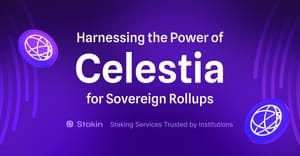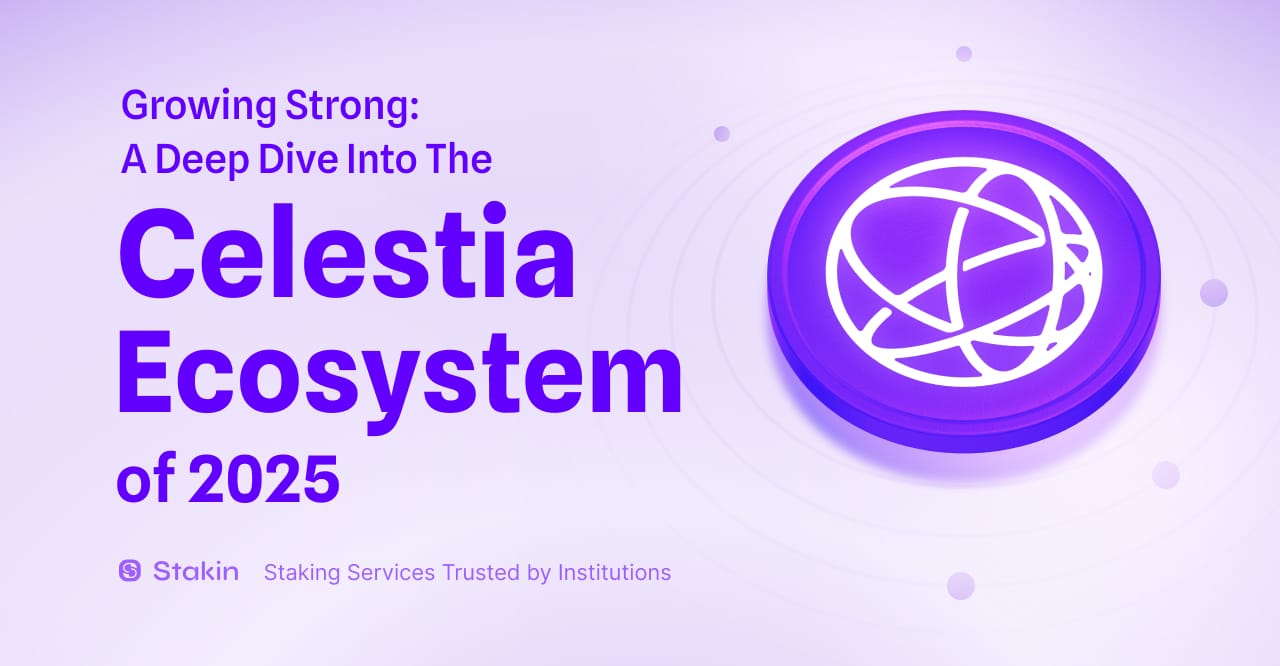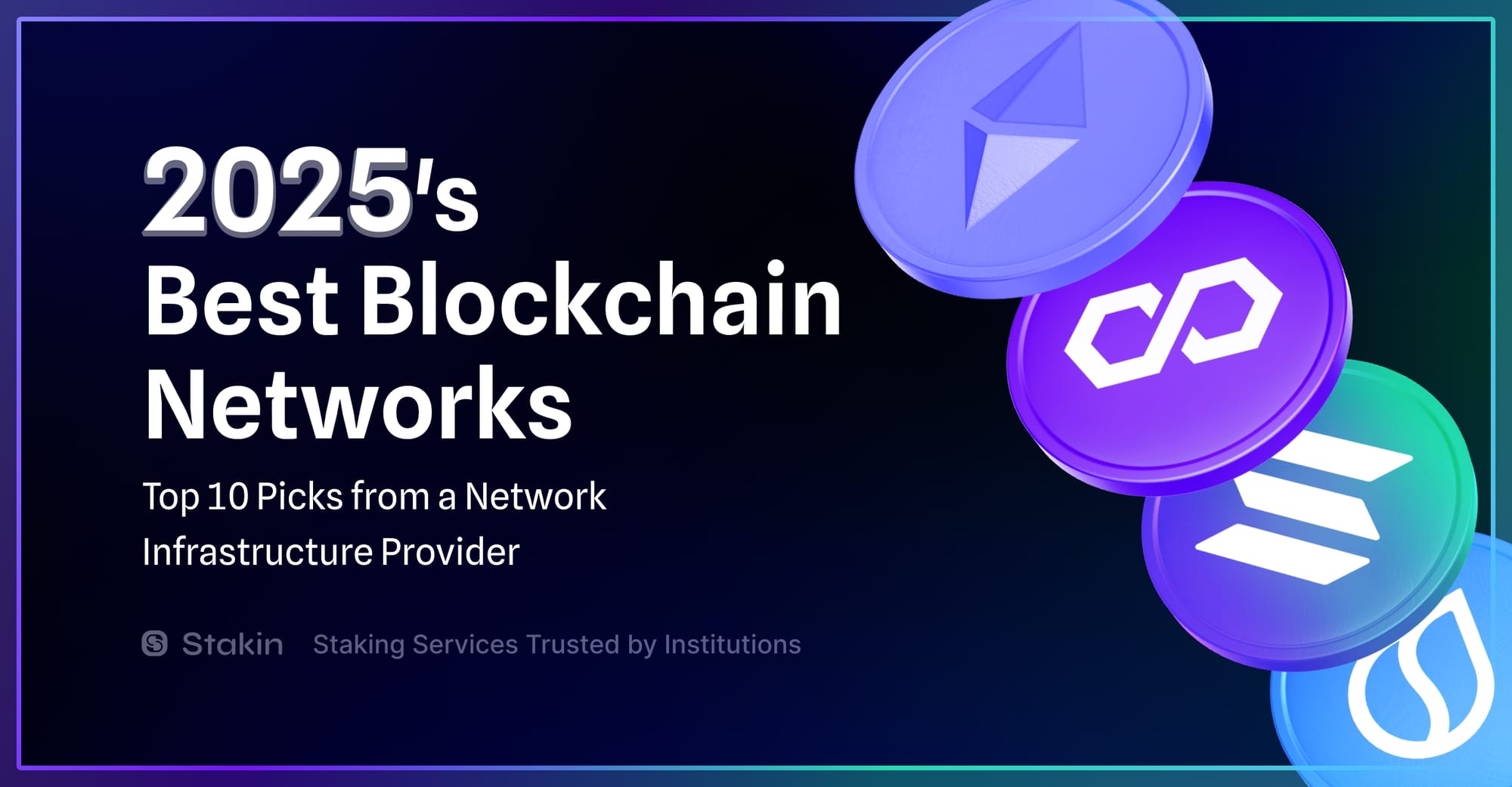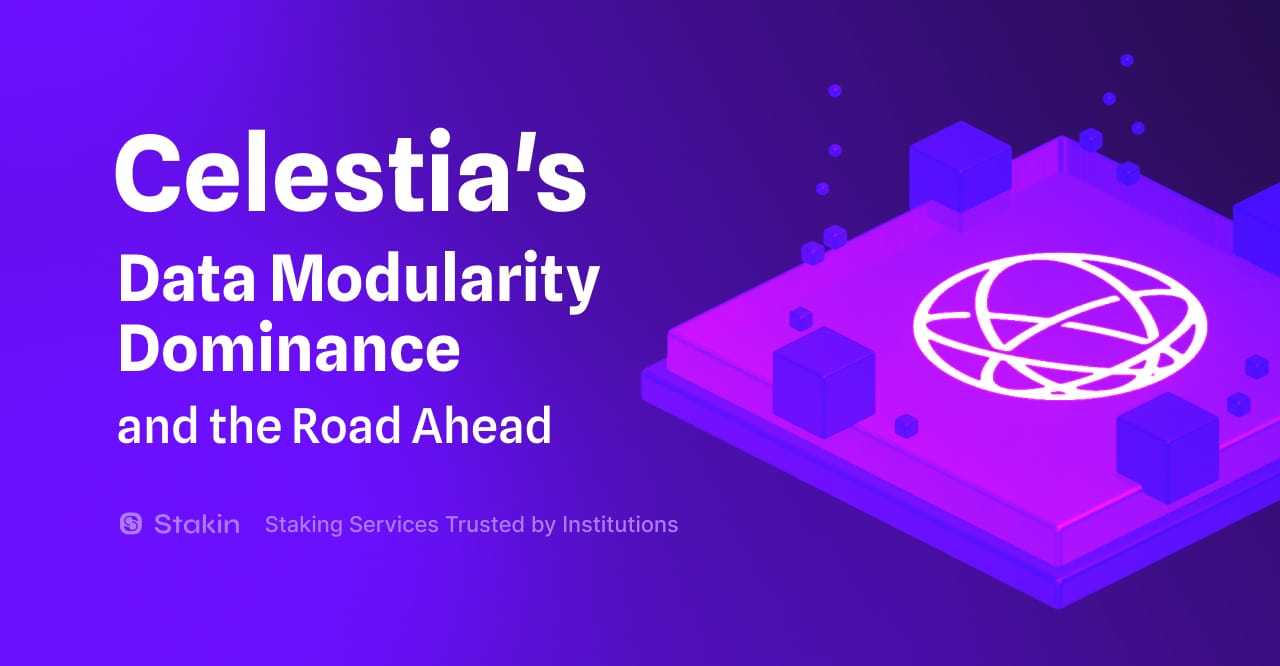In this article, we'll discuss sovereign rollups and Celestia's advantage over them, highlight a few examples, and explain how to begin building these on Celestia.
What are Sovereign Rollups?

To understand sovereign rollups, we must first understand what a rollup is to begin with.
Rollups are designed to increase blockchain scalability by processing transactions off-chain and then batching them to be added to the main blockchain. This reduces congestion and lowers transaction costs for users.
Some examples of rollups we may have heard of include optimistic and zero-knowledge (ZK). These all comprise what's known as a smart contract rollup.
Smart contract rollups rely on a settlement layer like Ethereum to handle ordering, data availability, and transaction verification. These rollups publish their entire blocks to the settlement layer and focus solely on execution.
This leads us to another kind of rollup called a sovereign rollup. Sovereign rollups differ by maintaining their own consensus and governance mechanisms. They only use another blockchain for ordering and data availability, giving them greater autonomy.
The key difference between sovereign and smart contract rollups is that nodes of the sovereign rollup verify transactions. In the case of smart contract rollups, smart contracts on the settlement layer are responsible for verifying transactions.
These nodes of the sovereign rollup are called rollup nodes and are responsible for independently verifying the transactions within the sovereign rollup. They perform their own consensus mechanism, ensuring that the transactions are valid according to the rollup's rules. This process allows sovereign rollups to maintain their autonomy and flexibility, as they do not rely on the settlement layer's consensus for transaction validation.
Some key properties of sovereign rollups include:
- Self-sovereignty: Sovereign rollups operate independently from the base layer's consensus. They can implement custom rules, upgrades, and governance structures without relying on the underlying blockchain community.
- Forkability: Unlike smart contract rollups, sovereign rollups can be forked to introduce new features or fix issues, giving the community more control.
- Customizability: They can tailor their execution environments, transaction models, and state machines to specific use cases, enhancing flexibility.
Celestia’s Advantage for Sovereign Rollups

To understand why Celestia is ideal for sovereign rollups, we need to understand more about Celestia and how it fits into the picture.
Blockchain consensus is crucial but challenging to set up, often involving complex mechanisms and significant maintenance efforts. Due to their reliance on economic deterrence, these systems require a protective security budget. To overcome this, we can use an existing blockchain's consensus and data availability.
We assume it will manage ordering and data availability by publishing transaction inputs to this external blockchain. This model essentially allows purchasing consensus as a service, reducing the initial costs of creating a new blockchain.
A blockchain doesn't need smart contracts to manage ordering and data availability, which is why Celestia's approach makes sense. Celestia provides consensus and data availability as a service. This enables the construction of a new blockchain that relies on these capabilities from an external blockchain, even without smart contract support. This system is known as a sovereign rollup, as we have described earlier.
In a sovereign rollup, Celestia's role is crucial because it provides these services, allowing new blockchains to leverage its capabilities for maintaining transaction order and ensuring data availability. This significantly simplifies the process of launching and maintaining a new blockchain by offloading the consensus mechanism to a more specialized and capable external service.
The advantage of using sovereign rollups with Celestia is to enhance the scalability, security, and autonomy of applications on-chain. Celestia's modular design allows these rollups to operate their own consensus and governance systems, separate from traditional base layers like Ethereum. This independence supports customized execution environments and more efficient handling of transaction verification and data availability.
Sovereign Rollups Using Celestia
Let's highlight a few examples of sovereign rollups using Celestia.
Astria
Astria uses Celestia to ensure data availability while maintaining its own decentralized sequencing and execution layers. This allows Astria to offer fast, censorship-resistant transaction ordering and strong finality without relying on a single sequencer, thus maintaining decentralization and sovereignty.
Key Features of Astria:
- Decentralized sequencer network: Astria's shared sequencer network provides decentralized block production for multiple rollups. This means transactions from various rollups are ordered into a single block and then written to the base layer (Celestia) without them being executed. This ensures fast pre-confirmations and finality once included on Celestia.
- EVM compatibility: Astria supports an EVM-compatible environment, making it easy for developers to deploy Ethereum-like rollups. This includes using standard Ethereum tools and compatibility with existing Ethereum dApps.
- Custom execution environments: Astria allows rollups to implement custom execution environments, facilitating a wide range of applications beyond just EVM-compatible ones. This flexibility enables developers to optimize their rollups for specific use cases.
- Rollup sovereignty: Astria ensures that rollups can maintain sovereignty by allowing them to upgrade or change their sequencing layer without being locked in. This independence is crucial for maintaining the decentralized ethos of blockchain technology.
Forma
Forma is the first live sovereign rollup built on the Astria stack, using Celestia for data availability. It operates its own instance of the Astria sequencing layer and focuses on providing a decentralized, permissionless environment for on-chain applications.
Forma's architecture makes it suitable for a variety of applications:
- DeFi Platforms: Developers can build decentralized exchanges, lending platforms, and other financial services on Forma, leveraging its scalability and security.
- NFT Marketplaces: Forma's support for custom execution environments enables the creation of efficient and user-friendly NFT platforms.
- Gaming: The low latency and high throughput of Forma make it an ideal choice for blockchain-based games that require fast and reliable transactions.
In fact, Modularium is a popular platform for art, featuring collections such as Celestine Sloth Society, among others.
For a complete list of other sovereign rollups using Celestia, be sure to explore the ecosystem page.
Final Thoughts
Hopefully, we will have a firmer grasp of sovereign rollups and Celestia's role with them. The best way for developers to begin building sovereign rollups using Celestia is by utilizing the Rollkit. Additionally, developers can explore the GitHub repositories for access to the codebase and further technical details.



